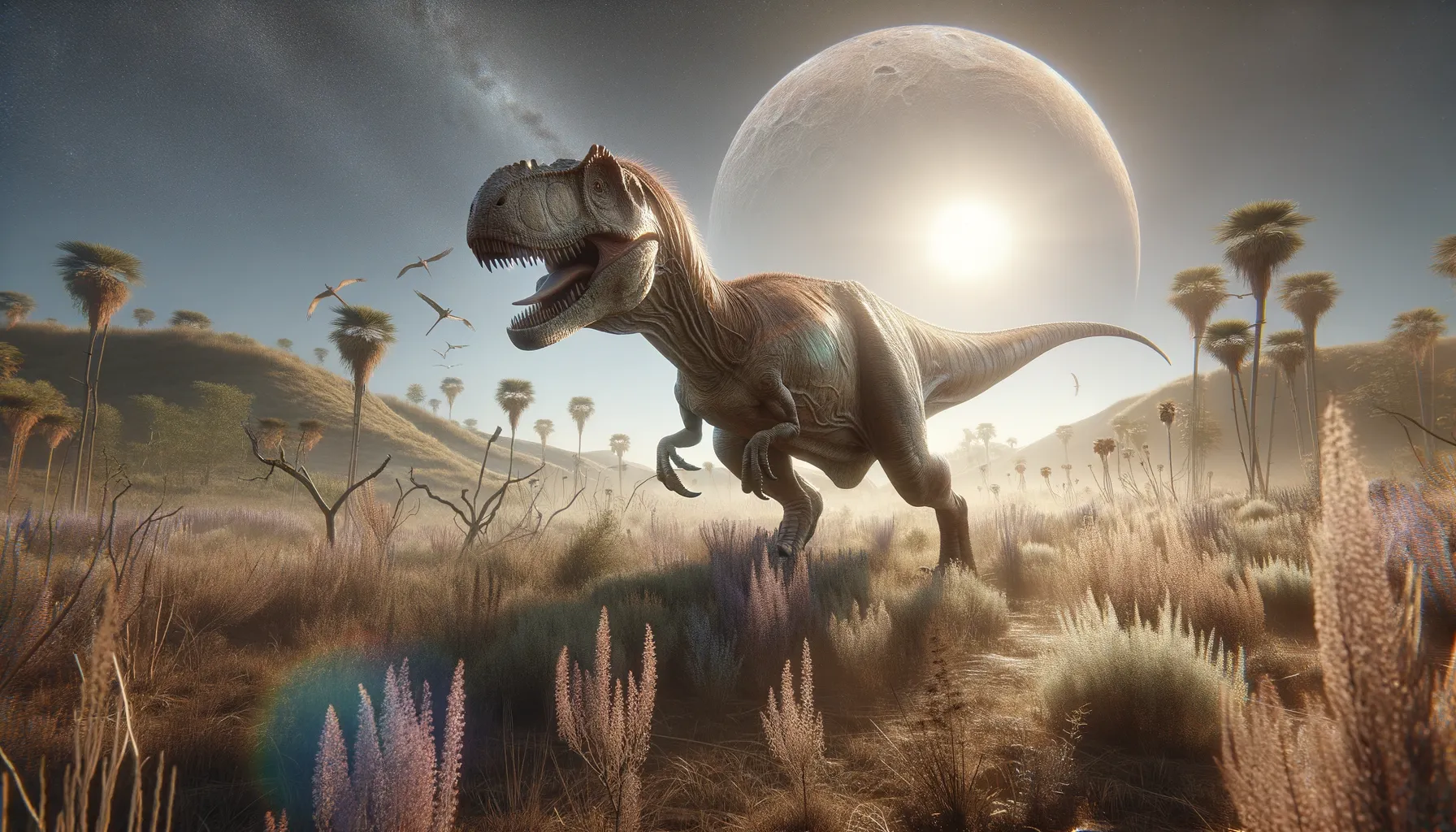
Hypsilophodon
The swift runner of the Cretaceous forest.
Period
Cretaceous
Length
Measured around 2 meters in length.
Height
Stood about 1 meter tall at the hip.
Weight
Weighed between 20 to 70 kilograms.
Hypsilophodon was a small, fast herbivorous dinosaur that roamed the Earth during the early Cretaceous period. It is known for its agile build, allowing it to swiftly navigate through its environment, possibly evading larger predators. Fossils found primarily in England have provided a detailed look into its anatomy and lifestyle, shedding light on its diet and behavior.
Diet
It was an herbivore, feeding primarily on the lush vegetation available during its time. Its diet likely included leaves, fruits, and possibly seeds, using its beak-like mouth to clip foliage efficiently.
Hunting
Hypsilophodon was not a hunter, as it was a herbivore. Instead, it relied on its keen senses and agility to find and consume plant matter efficiently.
Environmental challenges
Hypsilophodon faced environmental challenges such as finding sufficient food resources, especially in areas with seasonal changes. It also had to avoid predators that shared its habitat, using its speed and small size to hide among dense vegetation. Changes in the climate and ecosystems over time may have also affected its survival, pushing it to adapt to shifting environments.
Speed
It could run swiftly, likely up to 25 km/h.
Lifespan
Estimated to have lived for around 10 to 20 years.
First discovery
First discovered in the 1840s in England.
Fun Facts
- Hypsilophodon lived during the Early Cretaceous period, around 125 to 130 million years ago.
- This dinosaur was relatively small, growing up to about 2 meters (6.5 feet) long, which is about the size of a large dog.
- Hypsilophodon was a herbivore, meaning it ate plants, and it had specialized teeth for shredding leaves.
- One interesting feature of Hypsilophodon is its long legs, which suggest it was a fast and agile runner.
- Its name means 'high-crested tooth', referring to the shape of its teeth.
- Despite its small size, Hypsilophodon was well adapted to escape predators with its speed and agility.
Growth and Development
Hypsilophodon likely grew relatively rapidly to reach a size where it could fend off threats from predators. Juveniles may have relied on camouflage and staying close to the herd for protection. Their development stages, from hatchling to adult, highlight their survival strategies such as quick growth to avoid predation.
Habitat
Hypsilophodon lived in forested areas that provided ample cover and food resources. These environments offered a variety of plant life, which was crucial for its herbivorous diet. Proximity to water sources was also essential, as it not only quenched their thirst but attracted diverse flora.
Interaction with other species
Hypsilophodon likely coexisted with various other dinosaur species, maintaining a relatively low profile due to its size. It may have formed small groups for protection and social interaction. These interactions influenced its daily life, as it navigated the complexities of coexistence.
Natural lifespan
Hypsilophodon had a natural lifespan estimated to be between 10 and 20 years.
Reproduction
Hypsilophodon, like many dinosaurs, reproduced by laying eggs. Clutches were likely laid in secure, hidden locations to protect them from predators. Parental involvement post-laying might have been minimal, leaving hatchlings to fend for themselves once they emerged.
Social behaviour
Hypsilophodon may have exhibited social behavior, forming small groups or herds for improved safety and social interaction. These groupings could help in collective vigilance against predators. Communication within the group might have included visual and vocal signals.
Fossil locations
Fossils of Hypsilophodon have been predominantly found on the Isle of Wight in England. These discoveries have provided significant insight into its anatomy and behavior. The well-preserved fossils have helped paleontologists reconstruct its environment and lifestyle during the Cretaceous period.
